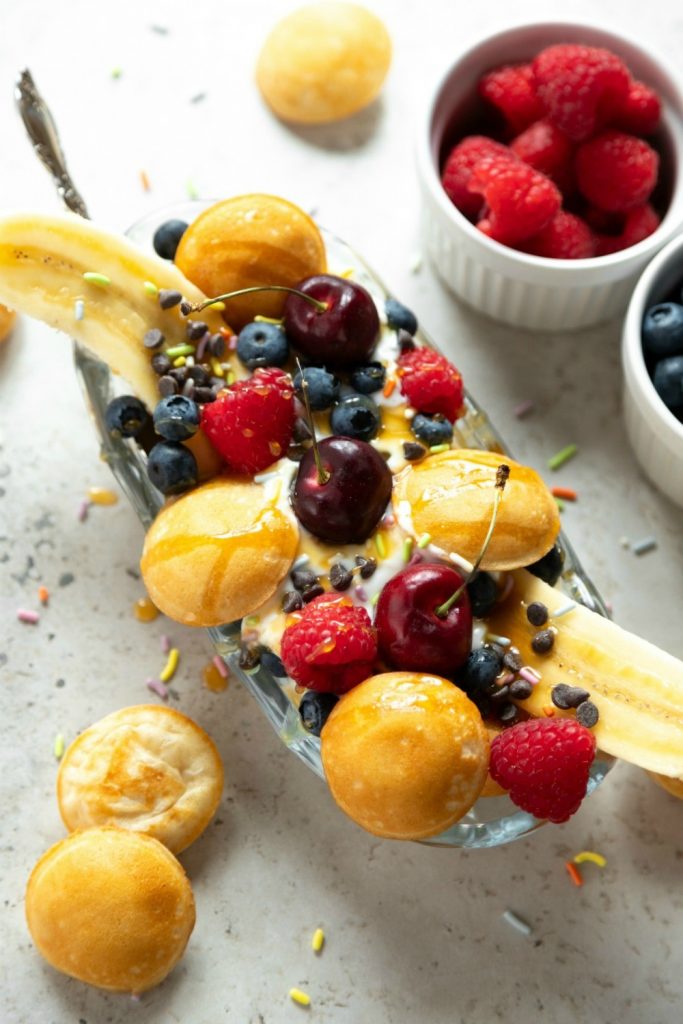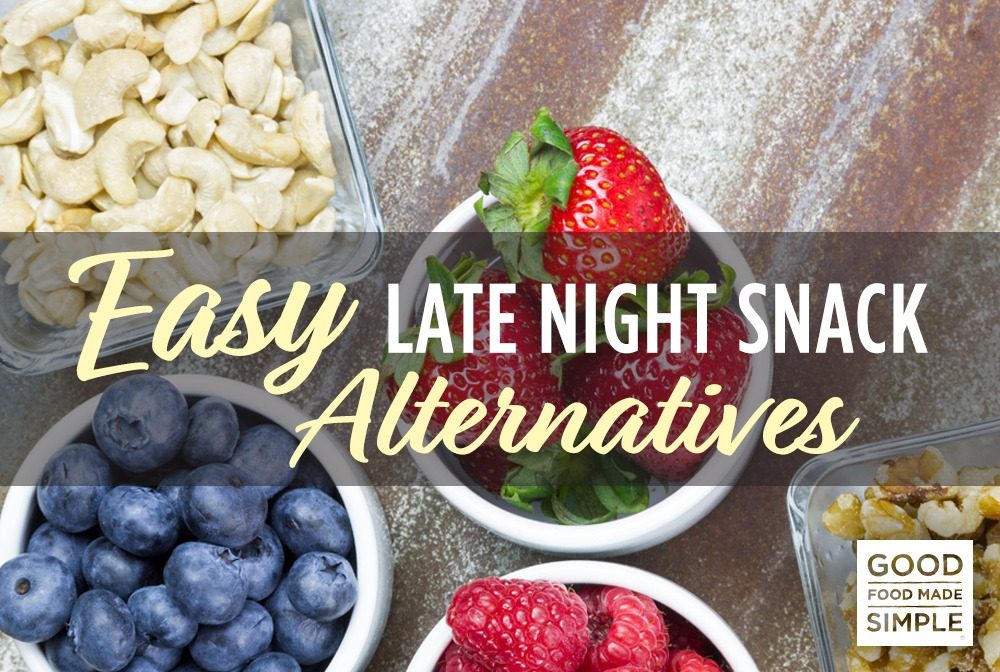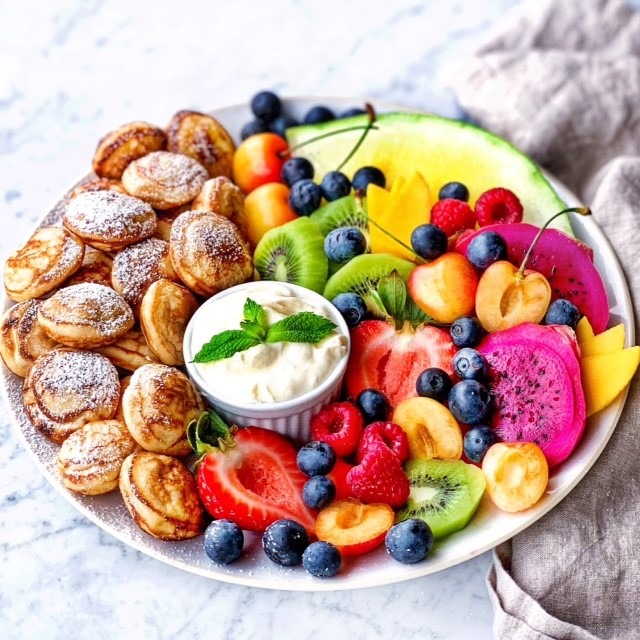Summer’s almost here, and that means you’re probably stocking up on fresh fruits and seasonal veggies to liven up dinnertime. Whether you want the comfort of a quick, ready-in-minutes meal or like to take your time playing chef, here are 50 (yes, 50!) simple and nutritious recipes for occasions of all types—summer barbecues, park-side picnics, or sunny beach days—and groups of all sizes.
As the weather heats up and the sun gets stronger, it becomes even more critical to get creative with both staying hydrated and dodging a case of getting “hangry.” After all, summertime salads five nights a week can get boring pretty fast. Discover new flavors and combinations you might not have expected, like refreshing watermelon and feta, keto friendly recipes, and inventive dishes for meat-eaters, vegetarians, and everything in between. When it comes to summertime in the kitchen, we know the last thing you want to do is turn on the oven, so we’ve included a variety of refreshing, no-cooking-required lunches and dinners for the hottest of days.
Vine-ripe tomatoes, sweet and soft mangos, and cool watermelon are just a few of the seasonal staples you come to expect every June through September. Make dinner more colorful with every dish, and don’t forget to leave room for dessert.
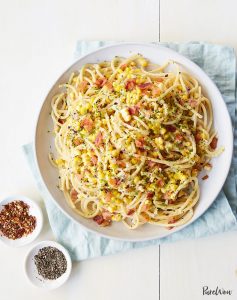
Bacon, corn, garlic, Parmesan cheese, and tasty pasta come together to form a creamy dinnertime staple: the Spicy Corn Carbonara. A comfort classic for a dish that’s ready in less than an hour.
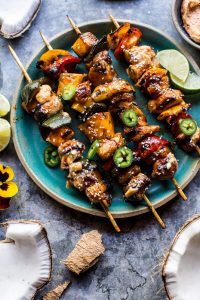
Three words: Sriracha honey butter. Slather this zesty, lime-y delight over Hawaiian barbecue skewers. Perfect for a party or just dinner for two, plus plenty of color thanks to the red, orange, and green bell peppers and cilantro.
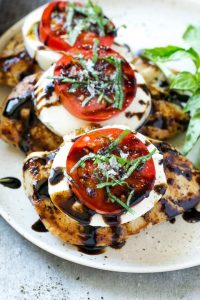
If you’re looking for a date night dish with a hint of sophistication, a chicken caprese is always a good choice. Summertime tomatoes are the shining star of this dinner, plus the grilled chicken topped with creamy mozzarella cheese and fresh basil is filling and pairs well with a tangy balsamic vinaigrette.
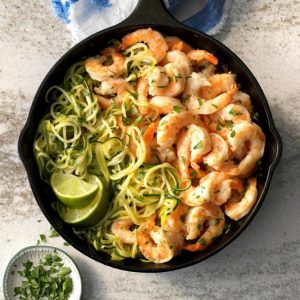
Zoodles have been having a moment for a while now, and for good reason. They’re a great way to sneak veggies into your dinner and go easy on the carbohydrates. This recipe features plenty of zucchini zoodles, tangy grilled shrimp, and a little bit of tequila for some fun. Squeeze a lime over the whole thing and enjoy!
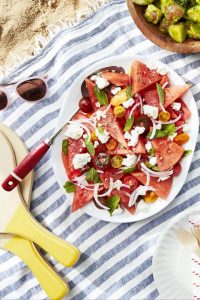
You might not automatically think to pair your juicy summer watermelon with ingredients like feta, tomato, and onion, but you’d be missing out on one of the best party salads of the season. Garnish with mint and bring along to a summer picnic. A surefire crowd pleaser ready in minutes.
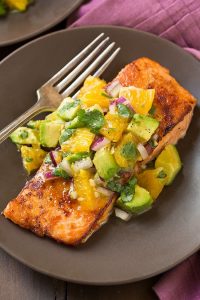
You might think of fresh-caught or frozen salmon as a complicated ingredient, but it doesn’t have to be. In fact, this honey-glazed salmon with avocado salsa takes only a half hour from start to finish. Orange and lime zest mingles with a sticky, delicious honey glaze to make an omega-3 packed dinner.
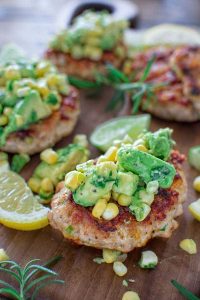
Tired of firing up the grill for heavy hamburgers? Make an easy protein swap for tender chicken burgers, paired with an easy-to-make avocado and corn salsa. Corn, avo, lime juice, olive oil, salt and pepper—that’s all it takes! Grab a bun or eat alone for a low carb alternative.
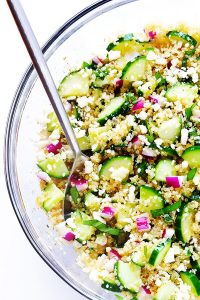
Light and refreshing, a cucumber quinoa salad is a gluten-free and colorful addition to any summer barbecue. With the help of feta and onion, the quinoa packs a flavor punch while only taking 10 minutes to chop and prep, so you can be out the door and on your way to the beach or pool faster.
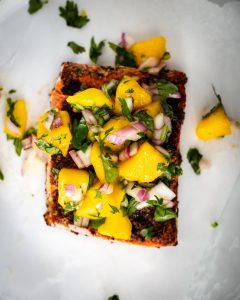
Nothing says “summer” like a mango salsa, a bright pop of yellow and orange that’ll make your mouth water with fresh flavor. Lime, cilantro, and peppers add a much-appreciated kick. Slap a few salmon filets on the grill until it’s flaky and light pink, topped with a hearty scoop of salsa.
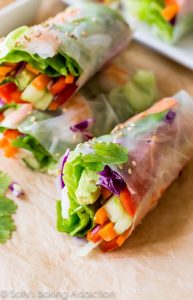
Part of the fun of making these Vietnamese spring rolls are the transparent rice papers you wrap them in, meaning you can see all the colorful ingredients inside. Thinly sliced carrots, chopped shrimp, cucumber, and more peek out from the rice paper. Wrap tight, then dip in a rich peanut sauce to serve. Trust us, there won’t be leftovers.
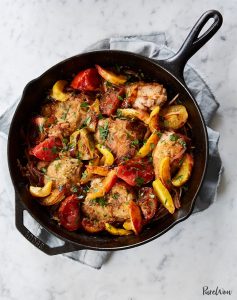
Pop all the ingredients in one skillet for an hour and voila! Easy roasted chicken made a little sweet with the help of some roasted Georgia peaches, blistering skillet tomatoes, and red onion. Winner winner, chicken dinner, as they say.
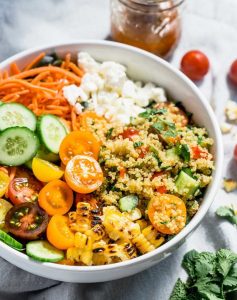
Packed with veggies, these summer “glow” bowls are a cool, colorful solution to a summertime dinner that won’t send you straight to bed. Fluffy quinoa mixed with a curry vinaigrette makes for an easy bowl o’ goodness.
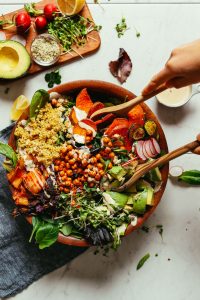
Our favorite game to play is, “What can we add to this salad to make it completely over the top?” This kale salad with a hearty tahini dressing looks good when dressed up with roasted sweet potatoes, avocado, or lots of crispy chickpeas. Did we mention it’s vegan, too?
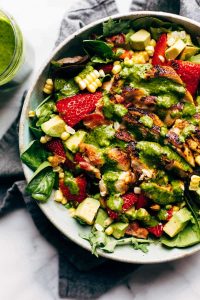
Cilantro. You either love it or you hate it. We love it so much, we think you should make an entire vinaigrette out of it. Super green and creamy, it’s the secret ingredient to this chipotle chicken and cobb salad, packed with summer corn and crispy bacon. Drizzle or douse how you please.

For slow cooker fans, summertime is the perfect season to let things simmer so you can enjoy the great outdoors. Pineapple, orange, and mango bring a tangy, almost sweet flavor to frozen or fresh chicken.
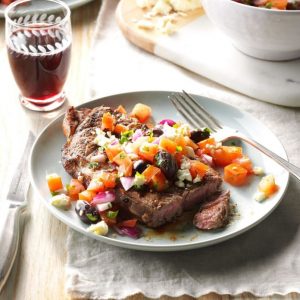
Red meat lovers will rejoice at the chance to eat a juicy ribeye this summer. This Greek relish ribeye recipe is anything but boring. Skip the A1 sauce and go for something with a lot more feta instead.
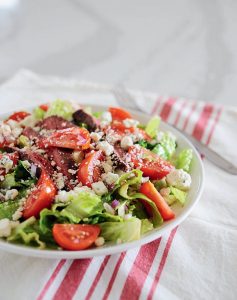
Sometimes you just want to enjoy a fancy dinner alone in peace, and that’s where the keto-friendly steak and blue cheese salad comes in. Who says you have to share a juicy steak? Take yourself on a dinner date without breaking your keto diet.
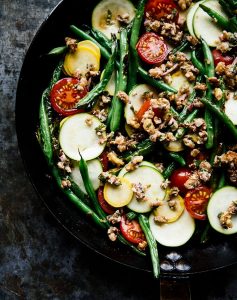
Blistered green beans are summer personified. They’re easy, delicious, and ready in less than 20 minutes. Walnuts add crunch, and tomatoes some color, but the green beans are the true star here.
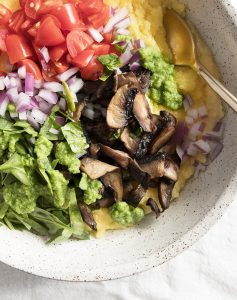
Love polenta but not all the butter and cheese that typically comes with it? This recipe is for you. Who says polenta can’t be a health food? Topped with mushrooms and veggies, it’s a reimagining of a comfort classic.
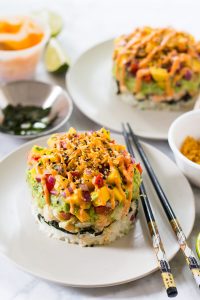
Just 20 minutes of prep time and some creativity gets you these shrimp stacks, which are kind of like a big sushi roll and have a healthy helping of avocado, sweet mango, and bang-bang sauce to keep things interesting.
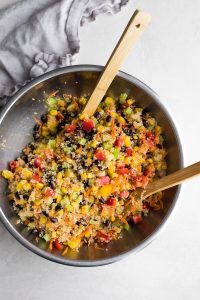
When it comes to vegetarian and vegan-friendly dishes at the summer function or pool party, there’s usually slim pickings, but this quinoa black bean salad checks all the boxes for the meat avoidant. Protein packed quinoa and black beans are nutrient-dense and make an easy lunch at the office.
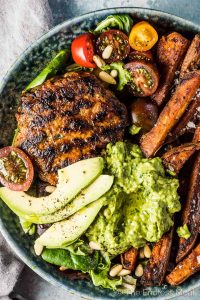
When you’re making pesto, there’s a hack you’ve probably never even heard of—swap the Parmesan cheese for an avocado and watch as the creamiest pesto appears. Smear all over a grilled chicken burger and call it a night.

Who doesn’t love fajita veggies? Seasoned perfectly and easy to make, these chicken fajita foils are a low carb and practically paleo alternative to the tortilla-heavy fajitas you might get at the local Tex Mex restaurant in town.
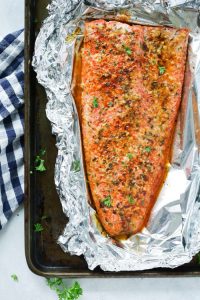
Fresh summer salmon is one of the best things about the warmer months, and you should take full advantage while you can. Wrapped in foil and seasoned with garlic, paprika, onion powder, and plenty of butter promises a moist, buttery dinner with easy cleanup, too.
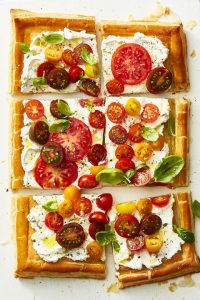
What could be a better combo than ricotta and fresh summer tomatoes on a toasted puff pastry? Cut into squares and serve at a party, or make in less than an hour for lunch or dinner at home.
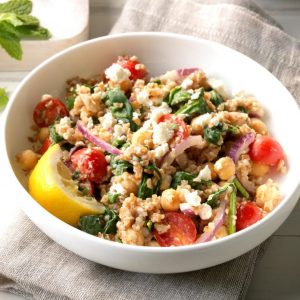
Ever tried to make bulgur? Hummus and feta bring a Mediterranean spin to your summer, plus it takes less than half an hour to make.
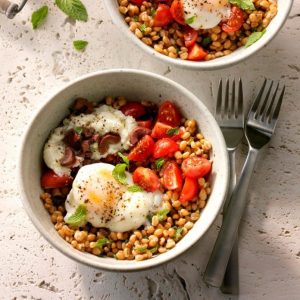
Enjoy a vegetarian take on the classic Buddha bowl, where you just might eat your first serving of wheat berries. Let the yolk of the poached egg pop and drizzle onto the cherry tomatoes to savor every bite.
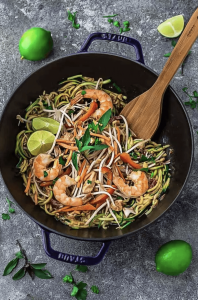
When you get tired of takeout calorie bombs and expensive Pad Thai, make your own low-carb version with zoodles instead. This keto, Whole30, and paleo-approved pad thai will be ready to eat in less than 30 minutes—faster than the delivery guy.
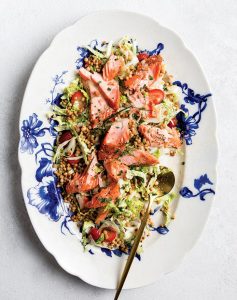
You might think prepping ingredients like salmon and fennel is complicated, but you haven’t tried this recipe yet. Couscous and an herb yogurt dressing add heartiness. Salmon salad will quickly become your summertime favorite.
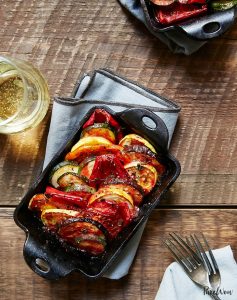
This ratatouille is a glamorous side to any dinner party, and you’ll quickly impress your friends with colorful roasted veggies. Luckily, it’s a low maintenance take on the normally labor-intensive French classic.
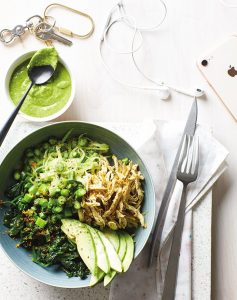
Ready in 25 minutes, make yourself several days’ worth of lunches when you attempt this popular green bowl recipe. The real secret? Store-bought green goddess dressing takes leftovers to the next level.

Summer is the time when grilling out and barbecue is a rite of passage, and these barbecue chicken foil packets are sure to be a hit at the next neighborhood BBQ. Make it your own with veggies of all types, but don’t forget the roasted corn on the cob.
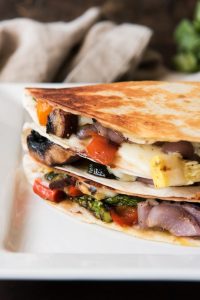
Who says quesadillas have to be overly carb-heavy and cheesy? (Let’s face it though, we love cheesy.) These grilled veggie quesadillas can use whatever you’ve got in the fridge, like squash, zucchini, or peppers. Just don’t forget to use at least two varieties of cheese.
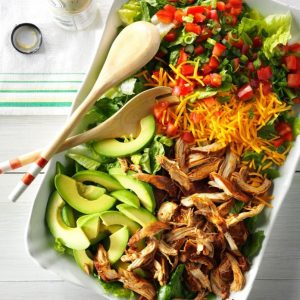
Slow Cooker Taco Salad is a twofer: kids love it, and it’s very low in lift. Just leave the chicken in the slow cooker for a while until you achieve max tenderness, then put the shredded chicken on a bed of romaine and call it a day—plus whatever other veggie toppings fit your fancy.
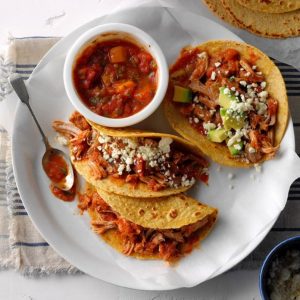
Can you tell we just love mango salsa? It goes with pretty much any meat, though this recipe calls for tender, slow-cooked pork seasoned with Mexican beer and sweet pineapple. A surefire way to get you out of a dinner rut.
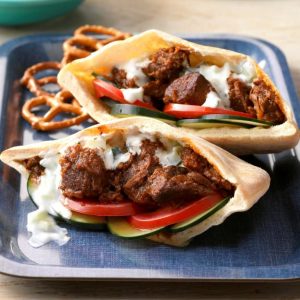
Some nights simply call for Mediterranean on the menu, like these slow cooker lamb pitas featuring the traditional (and oh so easy) tzatziki sauce, a mix of cucumber and yogurt. The lamb simmers for at least six hours or until deliciously tender. Almost no prep work required!
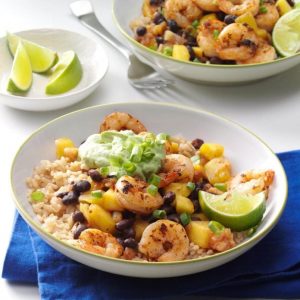
You don’t have to go on a Caribbean vacation to bring back the flavors and smells of the islands with these Caribbean shrimp and rice bowls. Easy prep and ready in no time, you can skip the cooking and get to sipping a rum cocktail instead.
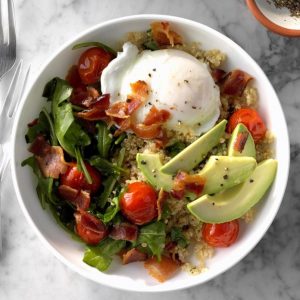
So you want a BLT without all the bready carbs? Look no further than these BLT quinoa bowls, which bring the bacon, lettuce, tomato (and avocado) goodness to every bite. More interesting than a sandwich and more filling, too.
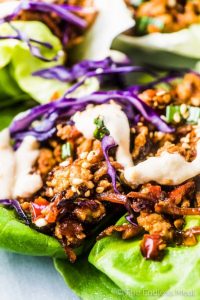
Wrapped up in lettuce (or a tortilla for the kids) and filled with lean ground turkey, a Thai turkey lettuce wrap is a crowd pleasure for adults cutting carbs but also for kids with an adventurous appetite. Caramelized vegetables bring a flavor explosion.
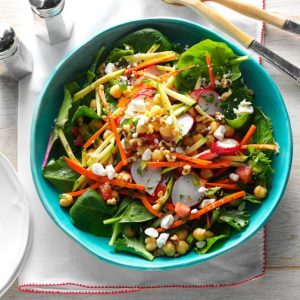
Looking for a vegetarian friendly salad without compromising on protein? A Garden Chickpea salad will keep you full far past lunchtime, plus crispy chickpeas over a bed of fresh lettuce is a combination that can’t be beat. Light and refreshing, this salad is great for vegetarians but also a great side dish if you’re peckish.

Can you believe there are people in the world who don’t think veggie pizzas are delish? We hardly can either, especially after trying this recipe, which makes good use of summertime vegetables, flavorful mushrooms, and plenty of peppers. Plus, it bakes in just 10 minutes!
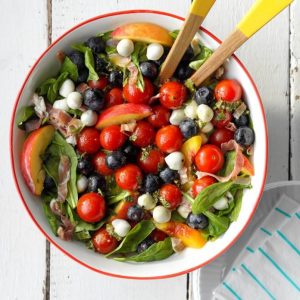
Looking for something special to bring to the Fourth of July party? This Red, White, and Blue Summer Salad will have folks seeing fireworks. Sweet and savory combine in this recipe, where mozzarella cheese and bright red cherry tomatoes compliment seasonal fruits like blueberries and peaches.
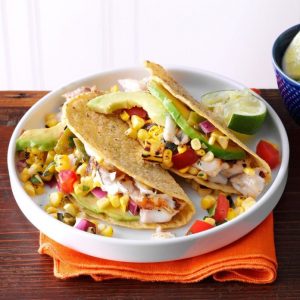
The true sign of summer isn’t the fact that the days get hotter or the sun sets later—it’s the beginning of fish taco season. Tilapia, tomatoes, and sweet corn, plus a big helping of avocado, set these tacos apart. See for yourself.
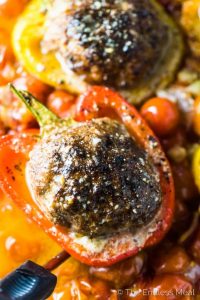
Did you hear? They’re calling hearty roasted peppers stuffed with meatballs the new meatloaf. It’s easy, cooks in just 15 minutes, and a sure-fire crowd pleaser for all ages.
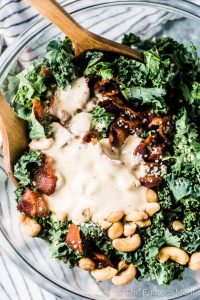
Say goodbye to the boring kale salad you thought you knew, and bring on the bacon instead. Plus toasted cashews and fine-chopped kale make this a lot easier to eat, so no one will accuse you of eating too much “rabbit food.” The more creamy Caesar dressing, the better.
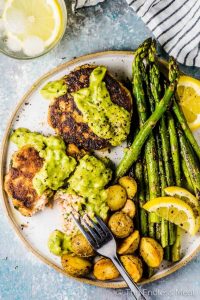
Crispy on the outside and tender on the inside, these salmon cakes also happen to be gluten-free and paleo-friendly. The tartare sauce uses avocado instead of mayonnaise for maximum creaminess.
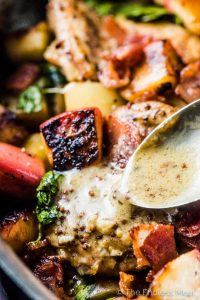
You wouldn’t normally think to put chicken and apples together, especially not in the summertime, but this combination—along with plenty of crispy bacon—is a one-pan staple that should be added to your dinner rotation ASAP.
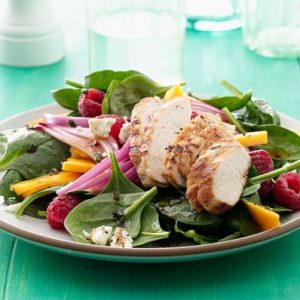
Summertime is the best time to combine your seasonal fruits like raspberry and mango into a savory, chicken-y salad. Crumble some goat cheese over a hearty bed of lettuce and sliced chicken. It’s a lunchtime or picnic favorite that’s sweet and refreshing in all the right ways.
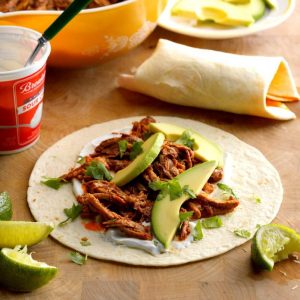
Break out the slow cooker one more time for this tasty pork burrito recipe, which cooks perfectly over the course of an eight hour day. Pork shoulder brings all sorts of flavor while chili powder and jalapeño peppers add the kick. Wrap in a warm flour tortilla with a big dollop of sour cream for burrito perfection.
Bonus Recipes!
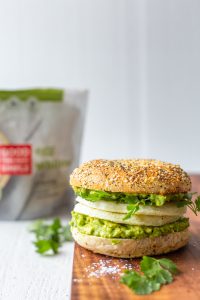
Two words: breakfast bagel. These everything bagels with a guacamole spread mean you can say goodbye to boring summer breakfasts like cereal or just toast. Packed with low calorie and nutrient dense egg white patties, you’ll stay full until lunch.

Whether it’s after a long day at the office or a long day at the beach, the Buffalo Style Chicken Mac and Cheese Sliders are comfort food at its finest. They only take minutes to make. Buffalo saucy, cheesy, and packed with flavor sandwiched between tiny sliders? What could beat that?
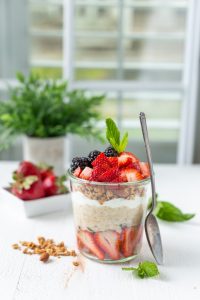
For something a little lighter and sweeter, why not try a gluten-free strawberry parfait? Bring to a party or make ahead an entire week’s worth of breakfasts for the office. Top with more fruit and any type of granola you like best.
So, which of the 50 recipes are you most excited about? Don’t forget to tag us in your creations #GoodFoodMadeSimple.
